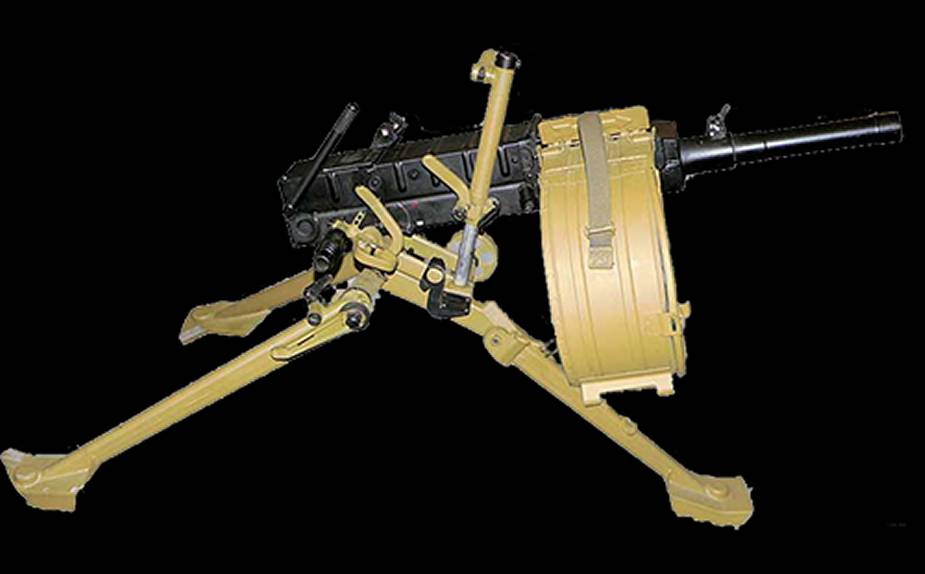The Pribor enterprise of Tecmash is the sole Russian designer and a major producer of small-caliber shells for automatic air guns, ground forces and the navy, as well as projectiles for grenade launchers. The enterprise is creating modern shells for small-caliber artillery and a new Balkan grenade launcher, Rostec said.
Follow Army Recognition on Google News at this link

The AGS-30 fires 30 mm VOG-17M, VOG-30, and GPD-30 fragmentation grenades. Ammunition feed is from a 29-round metal bell stored in an ammunition box attached to the right side of the receiver. (Picture source: Wikipedia)
In Soviet times, Pribor created small-caliber guns for 30 mm cartridges with a single ballistic solution for all arms and types of forces. It helped quickly launch large-scale production of unified shells. The approach ensured an advantage to domestic small-caliber artillery complexes. The new 30 mm cartridges were fired by marine AO-18 rifle, GSh-6-30, GSh-30, GSh-301 air guns, 2A42, 2A72 guns of infantry fighting vehicles and helicopters, 2A38 gun of Tunguska air defense system.
Pribor is currently producing for the Russian army and for export 23 and 30mm shells for the artillery, and 30 and 40mm rounds for grenade launchers.
The remotely controlled in-flight detonation of projectiles is an important trend of the 21st century : they increase the effectiveness of small-caliber artillery several times. Pribor has designed a system of remotely controlled detonation time (KDUVPS) for the combat tank support vehicle.
A key mission of small-caliber artillery is to fight small drones, which are broadly engaged in reconnaissance, electronic warfare, and destruction of pinpoint targets. Small-caliber artillery armed with remotely detonated projectiles is the main adversary of drones in the close zone. The projectiles increase the effectiveness of the fight against small drones, which are difficult to destroy by contact-action shells.
The development of small-caliber munitions also includes short-range grenade launchers. The weapons of Pribor double the fragmentation impact against previous launchers. The new fragmentation VOG-30D grenade increased the firing range of AGS-17 and AGS-30 launchers by a quarter. The Balkan 6S19 40 mm automatic grenade launcher is another innovation of the enterprise.
The mostly used domestic Plamya AGS-17 grenade launcher was accepted into service in early 1970s. It for the first time participated in combat in the Afghan war. It is still operated by the Russian army and the export option is in service in dozens of countries.
Plamya AGS-17 has a 30 mm caliber. The armed forces needed a bigger caliber and longer firing distance. The design of the new grenade launcher continued. Acceptance trials were completed in 2015 and a batch of six 40 mm Balkan launchers and 4000 grenades were produced in 2016 for test operation.
Balkan is distinguished from AGS-17 by a bigger 40 mm caliber. It exceeds foreign analogues by the parameter. Balkan can fire short and long bursts and continuously until the round of munitions is exhausted. The rate of fire is 400 shots per minute. The round of munitions includes three cartridge boxes with 20 fragmentation grenades each.
Acceptance trials of Balkan have been successfully completed and test operation is ongoing.
© Copyright 2021 TASS / Army Recognition Group SPRL. All rights reserved. This material may not be published, broadcast, rewritten or redistributed.














